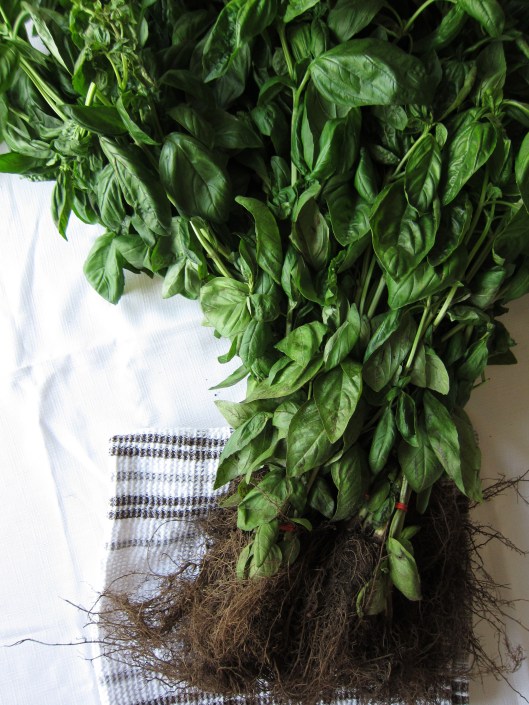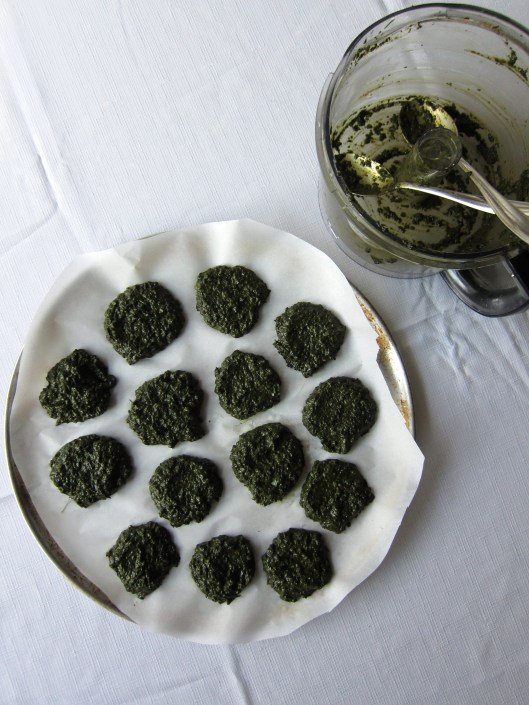End of season visits to the outdoor food market are always a little bittersweet for me. I get goosebumps of excitement and pangs of regret in equal parts. It’s a complicated phase in our relationship – I feel nervous and happy all at once.
I suppose it’s because I’m not very good with endings – even if I know that in reality, this isn’t an ending in the classic sense. Elegant stalks of rhubarb and asparagus will come back by May; sweet peas and baby zucchini in June; baskets of gemstone-coloured berries and velvet-skinned peaches through July and August. But in that transition between summer and fall, I always get a little panicky, at a loss as to how to maximise the last real days of the food market. I end up leaving the house without a recipe or a plan, only to wander around aimlessly between the market stalls with the jittery excitement of a puppy who circles the barbecue, hoping he’ll get tossed a hot-dog. I want all the strawberries, all the cucumbers and melons, and all those gorgeous batches of red romaine and frilly frisée from the grey-haired woman at the centre of the market I call “Madame Laitue”. Because she – like the berries and all other ephemeral summer foodstuffs – will soon pull an eight-month disappearing act. And secretly, the thought of it makes me a little sad. And a little desperate.
So, during my last visit, I binge-shopped my way through the last of the summer produce – pints of berries, a few long striped “snake” cucumbers, bunches of fresh herbs and French radishes, baskets of flat romano beans and cherry tomatoes, and several heads of Madame Laitue’s finest lettuce – again, with no recipe, no plan, spurred on only by a need to get it before it’s all gone.
For good measure, I also picked up nothing less than an obscene amount of basil – four whole stalks worth – because when something’s as beautiful and temporary as this, you throw pragmatism out the window and buy as much as you can carry.
So that’s what I did – I bought as much as I could haul home, cradled in one arm, like an enormous pageant-sized bouquet. For $10, It was the best purchase I’d made all week. The people I passed on the street seemed to agree, flashing me smiles and “oh la las” usually reserved for hunks and babes. (Montrealers are a special breed of Canadian and don’t shy away from expressing their affinity for food.)
There was one old man, though, who seemed totally confounded by what I was holding. He took a seat next to me on the metro, stared at my leafy bouquet for a little while, then coyly asked,
“C’est un aromatique ça?”
“Oui, c’est du basilic.”
“Mais c’est très fort comme odeur, non?”
“Haha, oui, en effet! Mais c’est délicieux! Vous voulez goûter?” (I pull off a leaf for him to try; he declines)
“Qu’est-ce que vous allez faire avec tout ça?”
“Du pesto, monsieur.”
“Mais c’est quoi ça, du pesto?”
In that moment I wished I could take him back home with me and make him a batch of pesto; wished I could see the look on his face when he tried it for the first time, swirled into a bowl of warm pasta dressed with parmesan; wished I could show him why, when you see fresh basil at the market, you take home as much as you can carry.

Basil Pesto (a riff on mom’s version) – makes about 3 cups of pesto
- 8 cups basil leaves (stripped from the stalk)
- 1 cup flat-leaf parsley
- 2-3 garlic cloves (adjust to taste)
- 1 cup Parmigiano-Reggiano, grated
- 2/3 cup olive oil
- salt, to taste
- 1 cup pine nuts (optional)
Notes:
- Pine nuts are a nice (and super traditional) addition to pesto. We don’t use them anymore because two of our in-laws have nut allergies (and, also because they’re esspennnsive). But if you can splurge on some, they add great flavour and texture. If using, just add the pinenuts into the processor with the other ingredients (1/2 cup in the first processed batch and another 1/2 cup in the second – see directions below).
- In traditional pesto-making, a mortar and pestle are used to mush everything together, but a food processor will work just as well.
- Parsley is not something pesto purists would add in, but mom does it and it tastes amazing.
- Pesto, like any sauce, is about adjusting and tasting. You can use this recipe as a guide, but trust your tastebuds when it comes to the final result.
Directions
1) In a food processor, chop the garlic. Add half of the basil, parsley and grated parmesan cheese (and 1/2 cup of pinenuts, if using) and pulsate for about 10 seconds.
2) With a spatula, scrape down the sides, put the top of the processor back on. Get your oil ready, turn on the processor and slowly add half the oil through the feed tube, until a paste forms. Season with salt.
3) Repeat with the remaining bail, parsley and parmesan cheese (and 1/2 cup of pinenuts, if using). You may need to remove the first batch of pesto from the processor, if there isn’t enough room; I just did one batch over the other and it worked fine. Taste it and adjust accordingly (add a bit of salt, a bit of oil…)
Notes: to refrigerate, place pesto in a glass jar and cover with olive oil. Use within a few days. To freeze, place spoonfuls on a tray lined with parchment paper. Once frozen, wrap individually (or in pairs) in parchment paper and transfer to freezer bags. The pesto will keep for several months in the freezer.






Question: how do you defrost the frozen pesto and can you use it the same way as fresh one?
Thanks
N
Hello Nat! I don’t have a microwave, so I usually let it defrost in the fridge or on the counter (if I’m organised haha). Otherwise, if I’m adding it to pasta, I just drain the pasta and toss the pesto in the warm pot, breaking it up until it’s mostly melted, then return the hot pasta to the pot and swirl it all around. Not fancy, but it works. If you have a microwave, you can zap it for 30 secs or so, but be careful not to burn it – basil is delicate. Good luck and let me know how it turns out!
Thanks! I certainly will.
Hey Julia, in your recipe you use the flat-leaf parsely and basil; typically when I make pesto I use spinach and basil. Which would you recommend?
Also, if pine nuts are not a feasible option what other nuts would you use instead (walnuts, pecans, almonds)?
Great post! Can’t wait to try!
Cheers,
Nick
Hi there, Nick! The parsley is a flourish from my mom – it might not be 100% authentic, but I think it works really well. Your spinach-basil combo sounds great! I imagine it might be a little more mellow than an all-basil pr basil-parsley mix. You’re a great cook though, so trust your tastebuds! (you might even want to play with the measurements in the recipe and tinker around with it until it’s to your linking.)
As for the nuts – adding pine nuts is obviously the traditional route, but I get that they’re not available everywhere (and they can be very pricey). I’d go with skinless almonds as an alternative. I think it might work better than pecans or walnuts, which can have a bit of a bitter taste because of their husks. That said, people make variations on pesto with just about anything…let me know how it works out!
“C’est quoi ca?” Haha… Brilliant. I use ice cube trays for my stocks etc…
Yes! Ice cube trays are a great freezing tool! But I find that the flat “patties” take up a little less room in my tiny freezer 🙂
I will have to try that for sure!